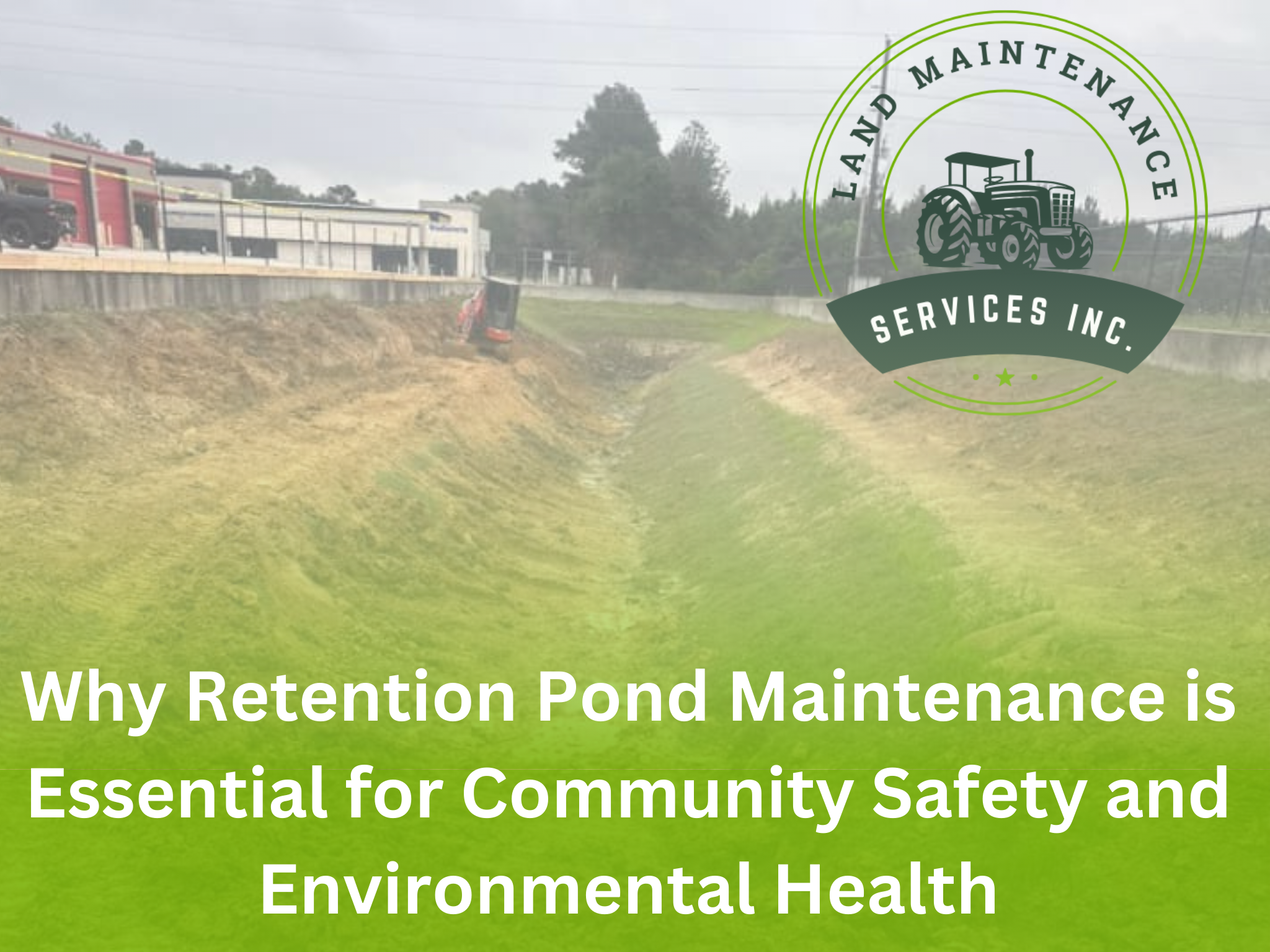Retention ponds are a vital component of modern stormwater management systems, designed to control runoff, reduce flooding, and improve water quality. However, the effectiveness of these ponds hinges on regular and thorough maintenance. Without proper care, a retention pond can quickly become a source of problems rather than a solution. Here’s why maintaining these ponds is so crucial.
1. Ensuring Effective Flood Control
The primary purpose of a retention pond is to capture and hold stormwater runoff, preventing it from overwhelming drainage systems and causing floods. Over time, however, sediment, debris, and vegetation can accumulate in the pond, reducing its capacity to hold water. If not regularly cleaned and dredged, a retention pond may become less effective at controlling floodwaters, putting nearby properties and infrastructure at risk. Regular maintenance ensures that the pond retains its designed capacity and functions optimally during heavy rain events.
2. Protecting Water Quality
Retention ponds play a key role in filtering pollutants from stormwater before it’s released into the environment. As water flows into the pond, sediments, oils, chemicals, and other contaminants are trapped, allowing cleaner water to exit. Without regular maintenance, these pollutants can build up, reducing the pond’s ability to filter water effectively. This can lead to contaminated water being released into downstream ecosystems, harming wildlife and potentially impacting local drinking water supplies. Regularly removing accumulated sediments and ensuring that vegetation is healthy and well-managed are essential for maintaining water quality.
3. Preventing Erosion and Infrastructure Damage
A well-maintained retention pond also helps prevent soil erosion by controlling the flow of water. However, when maintenance is neglected, erosion can occur around the pond’s edges, undermining its banks and potentially leading to structural failures. Erosion can also cause the pond to lose its shape and depth, further reducing its effectiveness. Regular inspections and repairs are necessary to maintain the structural integrity of the pond and prevent costly damage to surrounding infrastructure.
4. Maintaining Aesthetic and Recreational Value
In many communities, retention ponds are designed to be more than just functional; they also provide aesthetic and recreational benefits. A well-maintained pond can be a beautiful and serene space, enhancing the overall appeal of the neighborhood. Conversely, a neglected pond can become an eyesore, with overgrown vegetation, algae blooms, and accumulated trash. Regular maintenance, including landscaping, algae control, and trash removal, ensures that the pond remains a pleasant and usable community asset.
5. Supporting Wildlife and Biodiversity
Retention ponds can provide critical habitats for various wildlife species, including birds, amphibians, and insects. However, if a pond is not properly maintained, invasive species can take over, native plants can die off, and water quality can decline, all of which can negatively impact the pond’s biodiversity. By regularly managing vegetation, controlling invasive species, and monitoring water quality, maintenance efforts help ensure that retention ponds continue to support healthy ecosystems.
6. Complying with Regulations
In many areas, there are legal requirements for the maintenance of retention ponds. These regulations are in place to ensure that ponds function as intended and do not pose a risk to public safety or the environment. Failure to comply with these regulations can result in fines and other penalties for property owners or municipalities. Regular maintenance helps ensure compliance with local, state, and federal regulations, avoiding potential legal issues.
7. Extending the Lifespan of the Pond
Like any piece of infrastructure, retention ponds have a finite lifespan. However, with regular maintenance, their functionality can be preserved for many years. By investing in ongoing care—such as sediment removal, vegetation management, and erosion control—communities can extend the life of their retention ponds, delaying the need for costly repairs or reconstruction.
Conclusion
Retention ponds are invaluable assets for managing stormwater, protecting against floods, and safeguarding water quality. However, their effectiveness is directly tied to the level of maintenance they receive. Regular maintenance not only ensures that these ponds continue to serve their intended purpose but also protects the community, the environment, and the investment made in their construction. By prioritizing retention pond maintenance, we can ensure these critical systems remain functional and beneficial for years to come.

